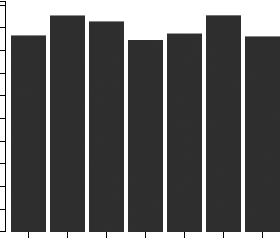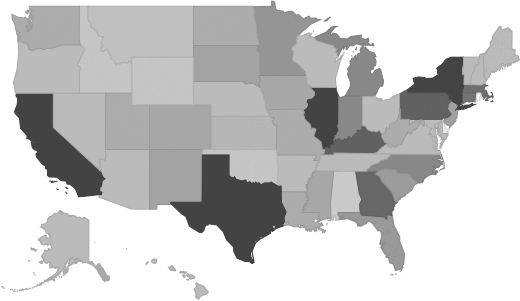Transportation and Warehousing - Market Size, Financial Statistics, Industry Trends
Industry Overview
The Sector as a Whole The Transportation and Warehousing sector includes industries providing transportation of passengers and cargo, warehousing and storage for goods, scenic and sightseeing transportation, and support activities related to modes of transportation. Establishments in these industries use transportation equipment or transportation-related facilities as a productive asset. The type of equipment depends on the mode of transportation. The modes of transportation are air, rail, water, road, and pipeline. The Transportation and Warehousing sector distinguishes three basic types of activities: subsectors for each mode of transportation, a subsector for warehousing and storage, and a subsector for establishments providing support activities for transportation. In addition, there are subsectors for establishments that provide passenger transportation for scenic and sightseeing purposes, postal services, and courier services. A separate subsector for support activities is established in the sector because, first, support activities for transportation are inherently multimodal, such as freight transportation arrangement, or have multimodal aspects. Secondly, there are production process similarities among the support activity industries. One of the support activities identified in the Support Activities for Transportation subsector is the routine repair and maintenance of transportation equipment (e.g., aircraft at an airport, railroad rolling stock at a railroad terminal, or ships at a harbor or port facility). Such establishments do not perform complete overhauling or rebuilding of transportation equipment (i.e., periodic restoration of transportation equipment to original design specifications) or transportation equipment conversion (i.e., major modification to systems). An establishment that primarily performs factory (or shipyard) overhauls, rebuilding, or conversions of aircraft, railroad rolling stock, or ships is classified in Subsector 336, Transportation Equipment Manufacturing, according to the type of equipment. Many of the establishments in this sector often operate on networks, with physical facilities, labor forces, and equipment spread over an extensive geographic area. Warehousing establishments in this sector are distinguished from merchant wholesaling in that the warehouse establishments do not sell the goods. Excluded from this sector are establishments primarily engaged in providing travel agent, travel arrangement, and reservation services that support transportation establishments, hotels, other businesses, and government agencies. These establishments are classified in Sector 56, Administrative and Support and Waste Management and Remediation Services. Establishments primarily engaged in providing rental and leasing of transportation equipment without operator are classified in Subsector 532, Rental and Leasing Services. Establishments primarily engaged in providing medical care with transportation are classified in Sector 62, Health Care and Social Assistance.Source: U.S. Census Bureau
Transportation and Warehousing Market Size
This report includes historical and forecasted market sizes and industry trends for Transportation and Warehousing. It reveals overall market dynamics from 2020 through the present, and predicts industry growth or shrinkage through 2030. Revenue data include both public and private companies in the Transportation and Warehousing industry.| Historical | Forecasted | ||||||||||
|---|---|---|---|---|---|---|---|---|---|---|---|
| 2020 | 2021 | 2022 | 2023 | 2024 | 2025 | 2026 | 2027 | 2028 | 2029 | 2030 | |
| Market Size (Total Revenue) | Included in Report |
||||||||||
| % Growth Rate | |||||||||||
| Number of Companies | |||||||||||
| Total Employees | |||||||||||
| Average Revenue per Company | |||||||||||
| Average Employees per Company | |||||||||||
Industry Revenue ($ Billions)

Industry Forecast ($ Billions)

Pell Research's advanced econometric models forecast five years of industry growth based on short- and long-term trend analysis. Market size statistics include revenue generated from all products and services sold within the Transportation and Warehousing industry.
Geographic Breakdown by U.S. State
Transportation and Warehousing market share by state pinpoints local opportunities based on regional revenue statistics. Growth rate for each state is affected by regional economic conditions. Data by state can be used to locate profitable and nonprofitable locations for Transportation and Warehousing companies in the United States.Industry Revenue by State [Sample]

Distribution by Company Size
| Company Size | All Industries | Transportation and Warehousing |
|---|---|---|
| Small Business (< 5 Employees) | Included |
|
| Small Business (5 - 20) | ||
| Midsized Business (20 - 100) | ||
| Large Business (100 - 500) | ||
| Enterprise (> 500) | ||
Industry Income Statement (Average Financial Metrics)
Financial statement analysis determines averages for the following industry forces:- Cost of goods sold
- Compensation of officers
- Salaries and wages
- Employee benefit programs
- Rent paid
- Advertising and marketing budgets
The report includes a traditional income statement from an "average" Transportation and Warehousing company (both public and private companies are included).
| Industry Average | Percent of Sales | |
|---|---|---|
| Total Revenue | Included |
|
| Operating Revenue | ||
| Cost of Goods Sold (COGS) | ||
| Gross Profit | ||
| Operating Expenses | ||
| Operating Income | ||
| Non-Operating Income | ||
| Earnings Before Interest and Taxes (EBIT) | ||
| Interest Expense | ||
| Earnings Before Taxes | ||
| Income Tax | ||
| Net Profit | ||
Average Income Statement

Cost of Goods Sold
Salaries, Wages, and Benefits
Rent
Advertising
Depreciation and Amortization
Officer Compensation
Net Income
Financial Ratio Analysis
Financial ratios allow a company's performance to be compared against that of its peers.| Financial Ratio | Industry Average |
|---|---|
| Profitability Ratios | Included |
| Profit Margin | |
| ROE | |
| ROA | |
| Liquidity Ratios | |
| Current Ratio | |
| Quick Ratio | |
| Activity Ratios | |
| Average Collection Period | |
| Asset Turnover Ratio | |
| Receivables Turnover Ratio | |
| Inventory Conversion Ratio |
Compensation and Salary Surveys
Salary information for employees working in the Transportation and Warehousing industry.| Title | Percent of Workforce | Bottom Quartile | Average (Median) Salary | Upper Quartile |
|---|---|---|---|---|
| Management Occupations | 3% |
Included |
||
| Chief Executives | 0% | |||
| General and Operations Managers | 0% | |||
| Office and Administrative Support Occupations | 87% | |||
| Material Recording, Scheduling, Dispatching, and Distributing Workers | 84% | |||
| Couriers and Messengers | 16% | |||
| Couriers and Messengers | 16% | |||
| Postal Service Workers | 83% | |||
| Postal Service Clerks | 13% | |||
| Postal Service Mail Carriers | 53% | |||
| Postal Service Mail Sorters, Processors, and Processing Machine Operators | 17% | |||
| Shipping, Receiving, and Traffic Clerks | 6% | |||
| Shipping, Receiving, and Traffic Clerks | 6% | |||
| Stock Clerks and Order Fillers | 8% | |||
| Stock Clerks and Order Fillers | 8% | |||
| Transportation and Material Moving Occupations | 84% | |||
| Supervisors of Transportation and Material Moving Workers | 5% | |||
| First-Line Supervisors of Transportation and Material Moving Workers, Except Aircraft Cargo Handling Supervisors | 5% | |||
| First-Line Supervisors of Transportation and Material Moving Workers, Except Aircraft Cargo Handling Supervisors | 5% | |||
| Motor Vehicle Operators | 35% | |||
| Driver/Sales Workers and Truck Drivers | 35% | |||
| Heavy and Tractor-Trailer Truck Drivers | 5% | |||
| Light Truck or Delivery Services Drivers | 30% | |||
| Material Moving Workers | 42% | |||
| Industrial Truck and Tractor Operators | 15% | |||
| Industrial Truck and Tractor Operators | 15% | |||
| Laborers and Material Movers, Hand | 8% | |||
| Laborers and Freight, Stock, and Material Movers, Hand | 8% | |||
| Packers and Packagers, Hand | 7% | |||
Government Contracts
The federal government spent an annual total of $1,080,678,362 on the Transportation and Warehousing industry. It has awarded 8,582 contracts to 711 companies, with an average value of $1,519,941 per company.Top Companies in Transportation and Warehousing and Adjacent Industries
| Company | Address | Revenue ($ Millions) |
|---|---|---|
Included |
||
